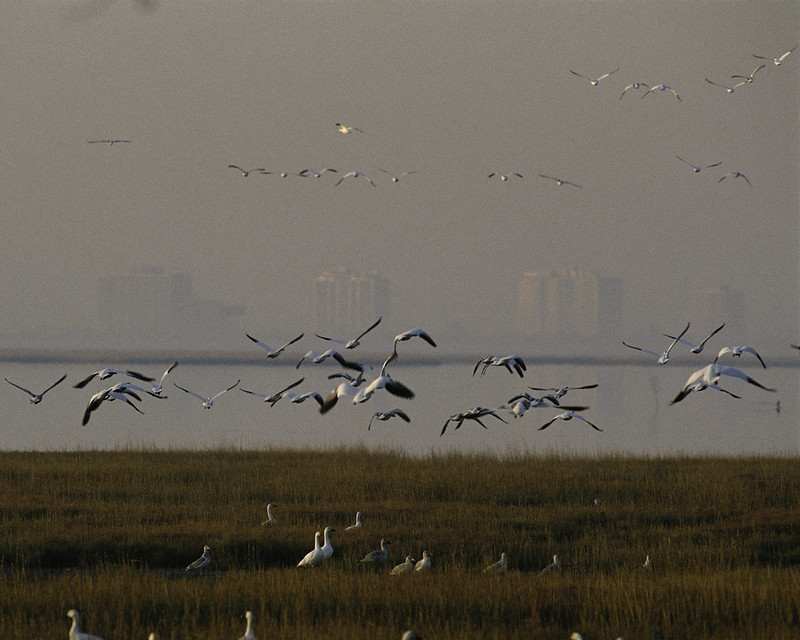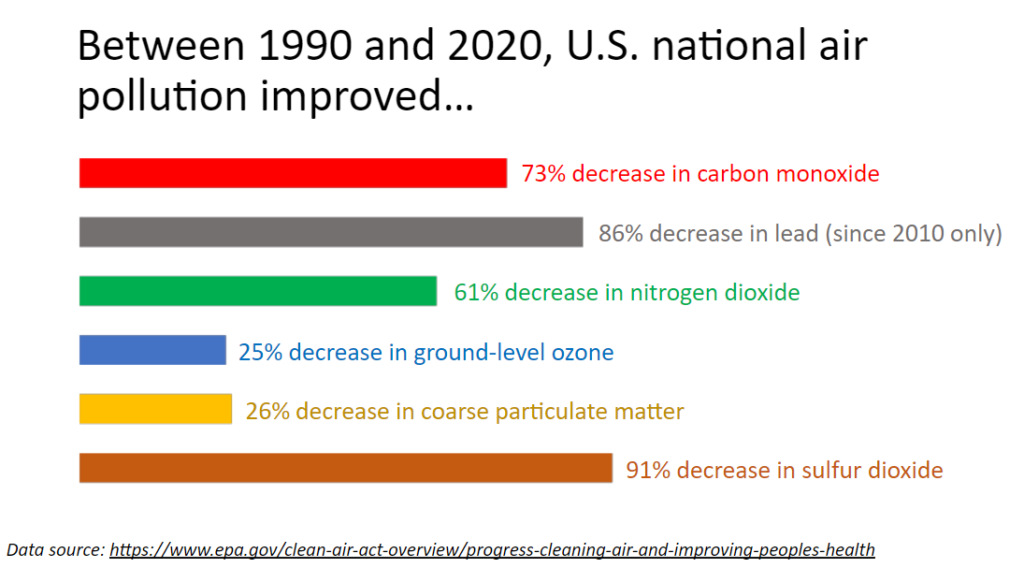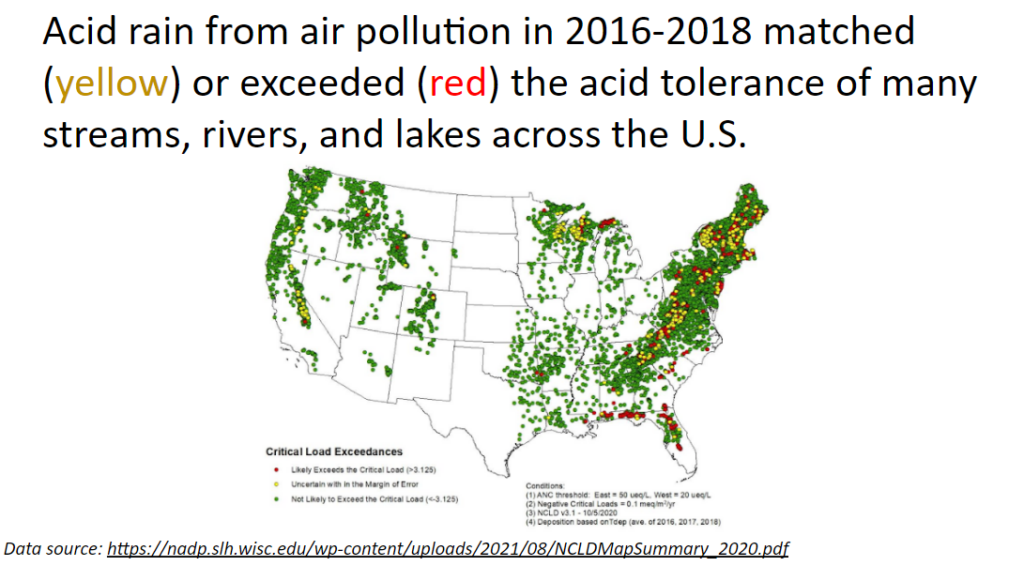Air Pollution and the Clean Air Act

Credit: USFWS
The purpose of Air Quality Awareness Week is to bring attention to air pollutants that damage human health and environmental health.
Background
When the Clean Air Act was written in the 1970s, it identified six criteria pollutants that contributed to the smog and air pollution of the time: nitrogen oxides, sulfur oxides, ground-level ozone, carbon monoxide, lead, and particulate matter (small particles classed by size). The Act allowed EPA to set national limits on air pollution primarily to protect human health, and secondarily to protect the environment. In the five decades in which the Clean Air Act has been implemented, it has contributed to national improvements in air quality:

Air pollution policies have benefitted the environment by reducing acid rain (which forms from criteria air pollutants nitrogen oxides and sulfur oxides) and improving visibility. However, recent research shows that in many public lands, current air pollution is still high enough to affect plants, animals, soils, or waters:

Most living things can tolerate a small amount of air pollution. When air pollution is higher than their tolerance, they may cease growing, become more prone to disease, or even die. A critical load or critical level is the maximum dose of air pollution that something can absorb without harm.
Critical loads for nitrogen and critical loads of sulfur help prevent the disappearance of sensitive lichen species, and prevent declines in herbs, trees, and fish. The Forest Service has produced a series of videos that describe different nitrogen and sulfur critical loads and how they can protect natural systems. Critical levels of ozone help prevent leaf injury or growth losses in plants. Critical loads help preserve biodiversity and allow federal, state, and tribal governments to protect living things and the environment against air pollution.
Air Pollution Resources to Share:
The EPA’s Plain English Guide is a great resource for information, images, and other resources about how the Clean Air Act works and why it is important: https://www.epa.gov/sites/default/files/2015-08/documents/peg.pdf
The Forest Service has an informational page on how nitrogen and sulfur air pollution affect natural ecosystems and how critical loads can protect them: https://www.srs.fs.usda.gov/airqualityportal/critical_loads/atmospheric_deposition.php
The Ozone Garden Network is a collaboration between NOAA and NASA that supports community science efforts to observe and track leaf damage: https://www.cgd.ucar.edu/research/ozone-garden/
Suggested Social Media Posts:
We can use critical loads (annual dosages of pollutants) to describe how air pollution affects living things and the beautiful public lands they inhabit: https://www.youtube.com/watch?v=L4b5ocZqKkI
Interested in knowing what the air quality is for your favorite National Park or Wildlife Refuge? Visit the National Park Air Conditions and Trends page or the US Fish and Wildlife Air Conditions and Trends page.
